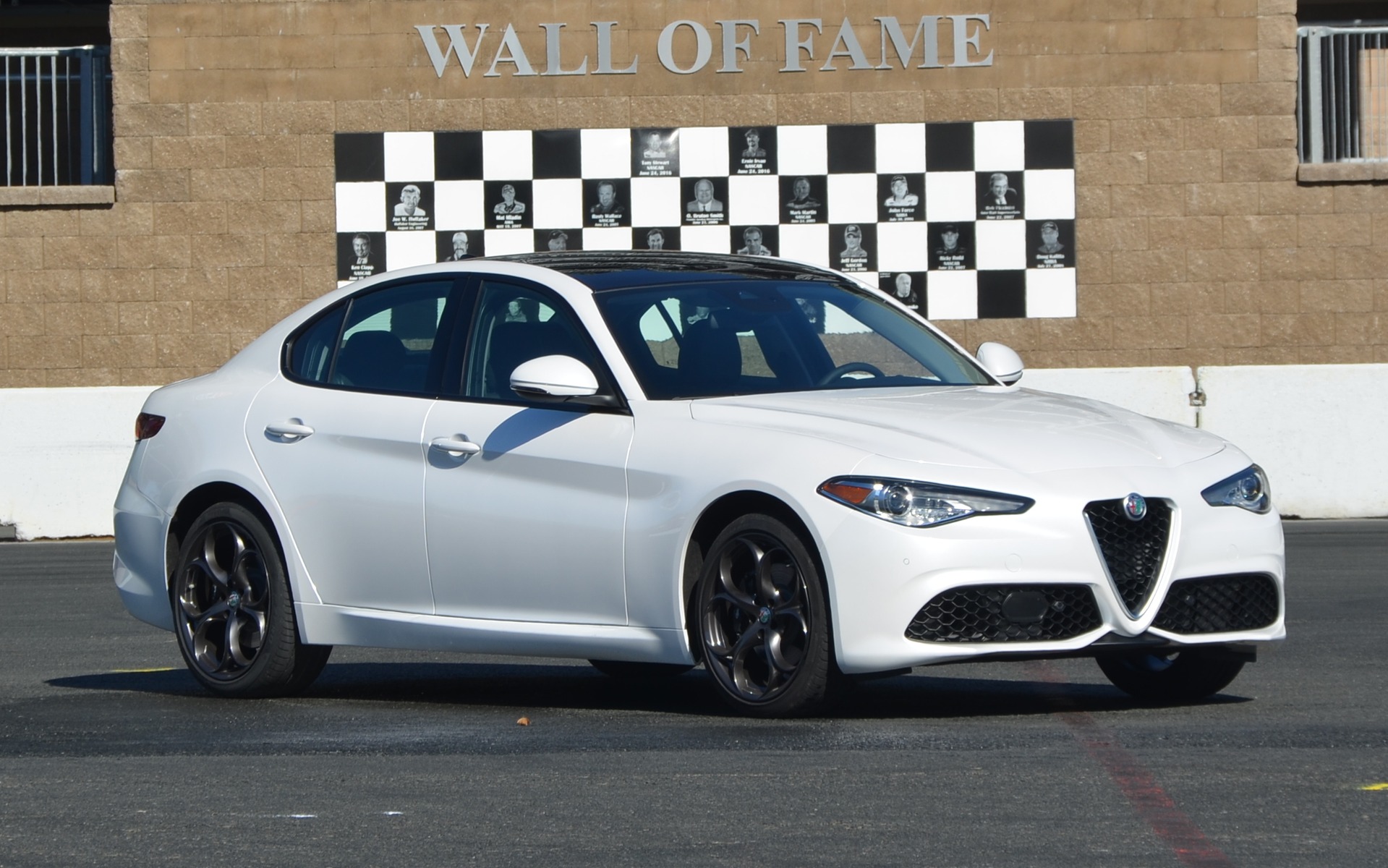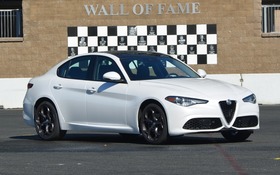EXCLUSIVE: The Car Guide drove the 2017 Alfa Romeo Giulia!

| Strong points |
|
|---|---|
| Weak points |
|
When it returned to the North-American market in 2015, Italian brand Alfa Romeo marked our collective imagination with its 4C, a two-seat sports car that was more at home on the silky-smooth pavement of racetracks than on our sadly neglected roads.
However, to survive, the company needs more than an extreme vehicle, conceived for purists ready to sacrifice a vertebra for three seconds of driving pleasure in a curve. It needs at least a more family-oriented sedan. That sedan is the Giulia, a name familiar to classic-car fans, since it was built in various forms between 1962 and 1977. This car was even distributed in Canada in the mid-sixties.
- Also: 2017 Alfa Romeo Giulia: The Car Guide is Driving it this Week!
- Also: What to expect from the 2017 Alfa Romeo Giulia Quadrifoglio
The new Giulia is… yes, new. Its platform and its engines are too, and the car is built in a new plant located in Cassino, Italy. What? You say that with the poor reliability track record of Italian products, such a high amount of novelties doesn’t bode well? My, such negativity.
The Giulia drives its rear wheels, although all-wheel-drive, identified by the Q4 badge on the trunklid, is optional. The performance version is named Quadrifoglio, and is offered only as a rear-driver. We’ll cover this version of the Giulia in a separate review.

Dynamic or bust
The 2017 Alfa Romeo Giulia starts off with a 2.0-litre, four-cylinder engine fitted with a twin-scroll turbocharger, and develops 280 horsepower at 5200 rpm as well as 306 pound-feet of torque between 2000 and 4800 rpm. A ZF eight-speed automatic transmission manages all this, no matter the version. However, a manual-transmission Giulia is offered in Europe. Even if the latter likely wouldn’t be a sales success in America, I believe the brand should’ve thought about its numerous North-American Alfistis, which are passionate driving enthusiasts.
The DNA Drive Selector is located on the console, a knob that allows the driver to choose between three modes: Dynamic, Natural and Advanced Efficiency. These three modes each have sufficient character as to notice their differences, especially between Natural and Dynamic. In A mode (Advanced), fuel economy is privileged, but not to the point of being frustrating as is the case with many vehicles that end up losing 90% of the engine’s power (I’m exaggerating a little). In the case of the Giulia, we feel that the gas pedal responds less quickly and that upshifts occur earlier.
The Natural mode could also be called Normal. It’s destined for the daily drive and makes the car more comfortable than in Dynamic mode, but far from being soft. After all, this isn’t a Buick. Finally, the Dynamic mode enhances the performance orientation of the 2017 Alfa Romeo Giulia. This mode not only has an effect on the electronic management system and the automatic transmission, but also on the brakes and steering. On Q4 versions, the all-wheel drive system’s management is also tweaked for a more virile driving experience.

It’s on the road that an Alfa stands out
The engine is willing and generous of its horsepower, although at high revs (redline is set at only 6100 rpm), it doesn’t feel as enthusiastic as its German equivalents. Turbo lag is imperceptible and the throttle is wonderfully progressive, a quality that generally can’t be attributed to its Teutonic rivals.
Handling is solid, thanks to a hyper stiff chassis, well-calibrated suspensions and Pirelli P Zero tires sized 225/40R19 up front and 255/35R19 at the rear. Alfa also mentions a weight distribution that approaches 50/50 front/rear. It feels like it when, on a tight highway on-ramp, we’re pushing the car and it stays planted to the pavement as if it was on rails. By the way, the flat-bottomed steering wheel is meaty and the steering is very precise, one of the most precise I’ve experienced in the last few years.
Dream to go grocery shopping in a snowstorm
Our neighbours down south will likely prefer the rear-drive models, while Alfa expects the opposite in Canada. The Giulia’s all-wheel drivetrain favours the rear wheels under normal driving. When the need arises, the transfer case can send up to 60% of torque up front. In addition, said torque can shift from left rear to right rear (and the opposite, obviously) in 150 milliseconds. No, I didn’t clock it. I’d even say that in the perfect conditions in which we drove both versions of the car (RWD and AWD), I didn’t feel any difference. We’re anxious for winter to arrive. I can’t believe I just wrote that…
This first evaluation of the Giulia, as you might have noticed, is positive. I would go to say that its road manners are equal to those of a BMW 330i (or 340i), but improved with surgical steering. Even grocery shopping will become enjoyable!
Grocery-getting in an Italian car? Actually, no. It’s more like a thrill ride and returning home with a few grocery bags, which spilled all over in the first curve!











